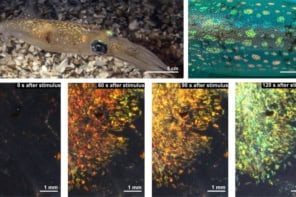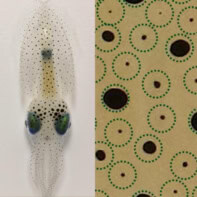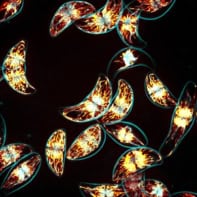Biologists at Johns Hopkins University have grown human retinal tissue from stem cells to determine how the various cells that allow people to see in colour develop. The work lays the foundation for developing therapies for diseases such as colour blindness and macular degeneration. The study also further establishes organoids — 3D organ models grown in vitro— as a powerful system for studying human development on a cellular level (Science 10.1126/science.aau6348).
“Everything we examine looks like a normal developing eye, just growing in a dish,” says Robert Johnston, a developmental biologist at Johns Hopkins. “You have a model system that you can manipulate without studying humans directly.”
Johnston’s lab is exploring how a cell’s fate is determined — or what happens in the womb to turn a developing cell into a specific type of cell. Here, the team focused on the three types of cone photoreceptors in the human eye, which respond to different wavelengths of light to give humans colour vision.
The authors note that most vision research is performed on mice and fish, which do not have the dynamic daytime and colour vision of humans. The mechanisms underlying the specification of red, blue and green cone cell subtypes in the human retina are thus largely unknown. This study represents some of the first vision research to be performed using human tissue.
“Trichromatic colour vision delineates us from most other mammals,” explains lead author Kiara Eldred, a Johns Hopkins graduate student. “Our research is really trying to figure out what pathways these cells take to give us that special colour vision.”
Eldred and colleagues grew stem cells into retinal tissue organoids that closely mirrored the developmental stages observed in in vivo retinal tissue. As the cells grew into full-blown retinas, the blue-detecting cells developed first, followed by the red- and green-detecting ones. The switch was determined by thyroid hormone signalling. The researchers point out that the level of this hormone wasn’t controlled by the thyroid gland (which obviously is not present in the in vitro set-up), but entirely by the eye itself.
By varying the amount of thyroid hormone during specific stages of development, the team was able to create organoids with only one type of cone. For example, they created retinas that — if they were part of a complete human eye — would only see blue, and ones that would only see green and red.
The finding that thyroid hormone is essential for creating red- and green-detecting cones provides insight into why pre-term babies, who have low levels of thyroid hormone, often have a higher incidence of colour vision defects. “If we can answer what leads a cell to its terminal fate, we are closer to being able to restore colour vision for people who have damaged photoreceptors,” says Eldred.
In the future, the team hope to use organoids to learn more about colour vision and how other regions of the retina, such as the macula, are created. Macular degeneration is one of the leading causes of blindness, thus understanding how to grow a new macula could lead to clinical treatments.



